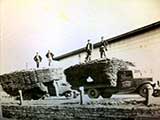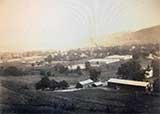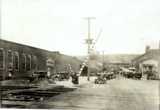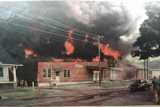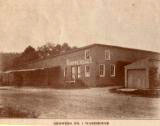
Tobacco to Market on Forest
From a Facebook post by John Brodt
 |
 |
| Mason County Tobacco | Selling the Crop, 1910 |
 |
 |
 |
 |
| Tobacco Beds | Planting Tobacco in Kentucky |
Mason County Tobacco The women on the right are “worming,” a.k.a. “suckering.” |
Cutting |
For a relatively brief overview of the tobacco cultivating process, try this site.
For how they grew tobacco in 1845, there's this.
The sound of a tobacco auctioneer
Breslin Warehouse after the 1937 Flood
 |
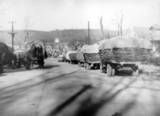 |
| The Home | At the top of Lexington Street, at Forest |
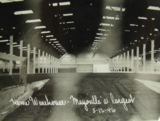 |
||
| Various Tobacco Warehouses, 1910 | On a warehouse floor, 1913 | Inside the Home Warehouse |
![]()
More recent pictures from a Maysville Warehouse of employees on the job are here.
![]()
 |
 |
 |
| Tuckiho Tobacco Warehouse, Maysville “room for 150 wagons inside” The Tuckiho opened in 1909 |
Inside “Home |
R. J. Reynolds Tobacco Re-Drying Plant, on the L & N Railroad, Maysville |
 |
 |
 |
At the Duke Warehouse |
Awaiting unloading | Going to Market, with oxen |
Planter's Warehouse, earlier the Tuckahoe
At the top of Union Street
From a Facebook post by Ron Bailey
Fire at Growers Warehouse
From a Facebook post by Ron Bailey
 |

 |
 |
| R. J. Reynolds Tobacco, later, Parker Tobacco Co. | World's Largest Tobacco Warehouse, circa 1914 |
J. B. Heizer Tobacco Co. |
Map of Maysville Tobacco Warehouses, circa 1930
At the peak, there were 16 tobacco warehouses in Maysville
![]()
| Peoples Warehouse history is here. | History of the Maysville tobacco market is here. | State of the Maysville tobacco market in 1935 is here. |
| A list of all the tobacco warehouses from 1950. | The 18 tobacco warehouses of 1937. | Gray's Tobacco Warehouses |
| A Cincinnati Enquirer article in 1884 proposes to talk about the history of tobacco in Cincinnati, but spends the first column talking about the history of Maysville's tobacco markets. Here. | ||
![]()
 |
 |
 |
| American Tobacco Company | Gray's Liberty Warehouse, Commerce and Third |
|
![]()
| These are all items from the Tobacco Wars of 1908 of so. If you're unfamiliar with the background of the night riders and the tobacco wars, we suggest starting here. | Kreitz and Longnecker warned. Kreitz yielded to night riders; Longnecker did not, and gunfights followed. Longnecker situation “ very acute.” |
Mrs. A. C Respess finds an empty grave in her tobacco bed, here. |
| Ben Loud, near Maysville, is hit by night riders, here. | “The American Tobacco Company has placed a Gatling gun on the roof of their warehouse in Maysville, Ky., to prevent night riders burning the building. Men will be constantly on guard and work the gun if the night riders appear.” The Plymouth (Ind.) Tribune, March 19, 1908 |
|
| Night Riders alleged to be from Maysville hit tobacco beds in Brown County, Ohio. Here. | Twelve masked night-riders surrounded the home of James Devon a member of the tobacco pool, near Shannon, Kentucky, Sunday night and fired several volleys through the windows. No one was hurt, The night riders gave warning that they would return. Devon has armed himself and barricaded his house.” Sacramento Union, October 12, 1909, which almost certainly has mis-reported that Devon was a member of the pool. Pool members didn't get attacked. | |
| B. F. Clift had his letter in defense of opposing the night riders in the Courier-Journal on March 3, 1908. A logical and reasoned rebuttal, from Dover's M. A. Lloyd, appeared in the Courier on the 20th. Also on the 20th was a note that there had been a grave dug on Clift's farm as a warning. | ||
| The Courier-Journal looked back at the Night Riders in this 1944 article. | One Mason farmer brings in a cannon to protect his crop. | |
| Fred Adams warned to pool his tobacco. | ||
| Sardis' Joshua Rees encounters Night Riders. | Tobacco farmers declare victory. | |
![]()
“Maysville Bulletin: A sample of white tobacco [burley], which we have been shown, grown on the farm of Mr. H. C. Morgan, of this county, is thirty-two inches in length, silky to the touch, and of a bright gold color. He planted last season forty acres, which produced something over 60,000 pounds, all of which will compare very favorable to the example. Dr. Morgan's crop is, however, an exception, as unfortunately a large proportion of the tobacco of the last season is heavy, of a dark color and of an inferior quality generally.” Courier-Journal, November 17, 1875 |
![]()
An article on Maysville's tobacco industry from 1910 is here.
![]()


